Male sex and the risk of mortality among individuals enrolled in antiretroviral therapy programs in Africa: a systematic review and meta-analysis
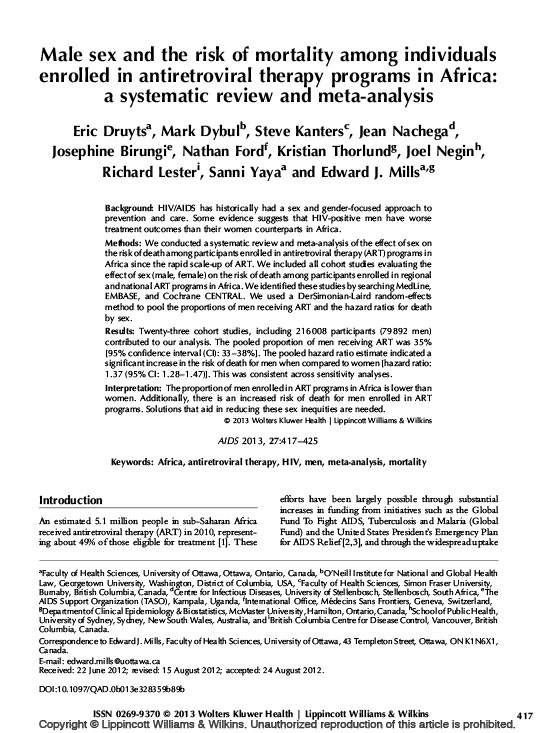
Background: HIV/AIDS has historically had a sex and gender-focused approach to prevention and care. Some evidence suggests that HIV-positive men have worse treatment outcomes than their women counterparts in Africa. Methods: We conducted a systematic review and meta-analysis of the effect of sex on the risk of death among participants enrolled in antiretroviral therapy (ART) […]
Expanding HIV care in Africa: making men matter in Johannesburg
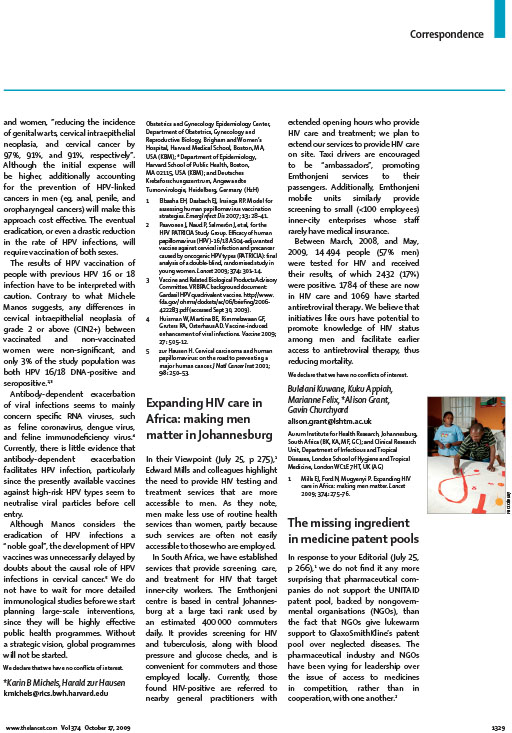
In their Viewpoint (July 25, p 275), Edward Mills and colleagues highlight the need to provide HIV testing and treatment services that are more accessible to men. As they note, men make less use of routine health services than women, partly because such services are often not easily accessible to those who are employed. In […]
Lower Levels of Antiretroviral Therapy Enrollment Among Men with HIV Compared with Women — 12 Countries, 2002–2013

World AIDS Day, observed on December 1, draws attention to the current status of the human immunodeficiency virus/acquired immunodeficiency syndrome (HIV/AIDS) epidemic worldwide. This year’s theme is World AIDS 2015: The Time to Act is Now. The first cases of AIDS were reported more than 30 years ago, in the June 5, 1981 issue of […]
Estimates of global, regional, and national incidence, prevalence, and mortality of HIV, 1980–2015: the Global Burden of Disease Study 2015
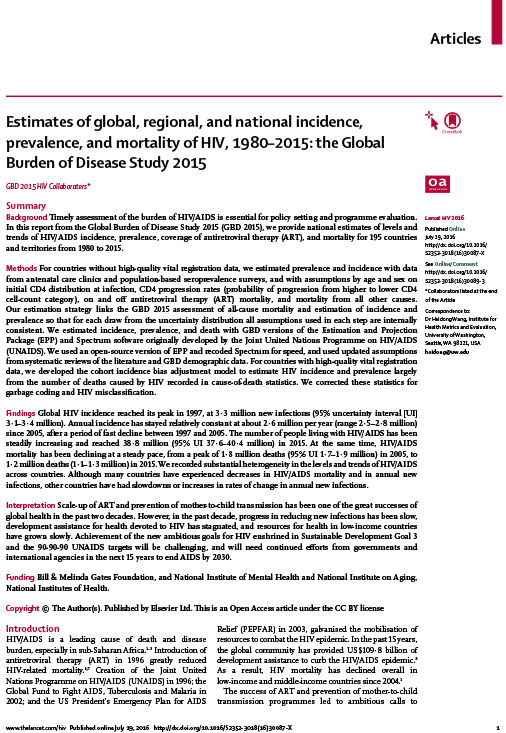
Seek, Test and Disclose: knowledge of HIV testing and serostatus among high-risk couples in a South African township
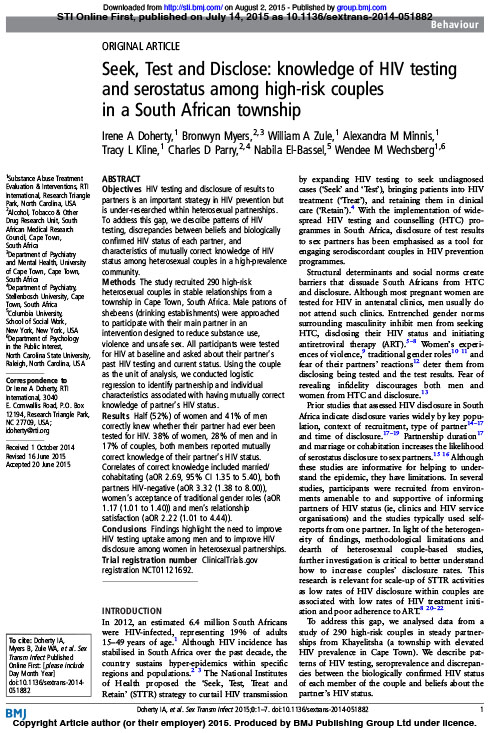
Objectives HIV testing and disclosure of results to partners is an important strategy in HIV prevention but is under-researched within heterosexual partnerships. To address this gap, we describe patterns of HIV testing, discrepancies between beliefs and biologically confirmed HIV status of each partner, and characteristics of mutually correct knowledge of HIV status among heterosexual couples in […]
Towards a male-centered model of care: understanding male preferences and barriers to HIV care in Khayelitsha, South Africa.
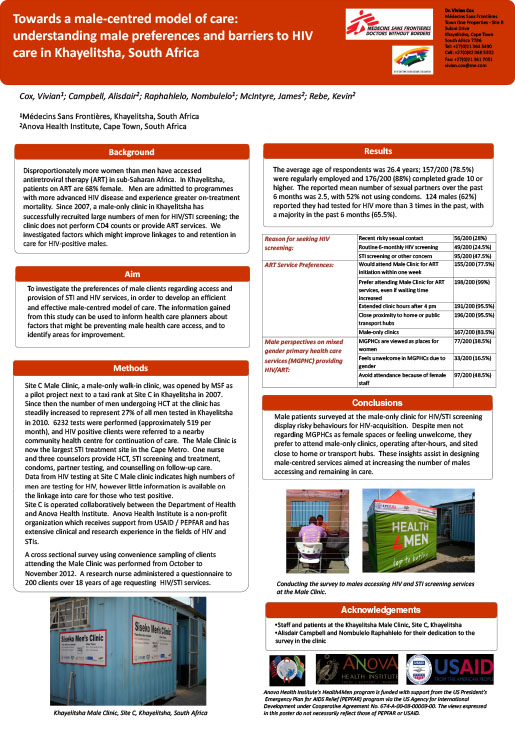
Disproportionately more women than men have accessed antiretroviral therapy (ART) in sub-Saharan Africa. In Khayelitsha, patients on ART are 68% female. Men are admitted to programmes with more advanced HIV disease and experience greater on-treatment mortality. Since 2007, a male-only clinic in Khayelitsha has successfully recruited large numbers of men for HIV/STI screening; the clinic […]
Modelling the demographic impact of HIV/AIDS in South Africa and the likely impact of interventions
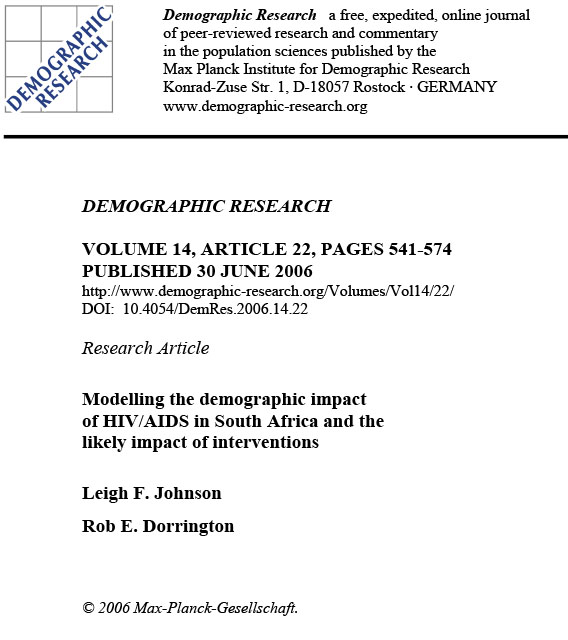
This paper describes an approach to incorporating the impact of HIV/AIDS and the effects of HIV/AIDS prevention and treatment programmes into a cohort component projection model of the South African population. The modelled HIV-positive population is divided into clinical and treatment stages, and it is demonstrated that the age profile and morbidity profile of the […]
The HIV Blind Spot: Men and HIV Testing, Treatment and Care in Sub-Saharan Africa
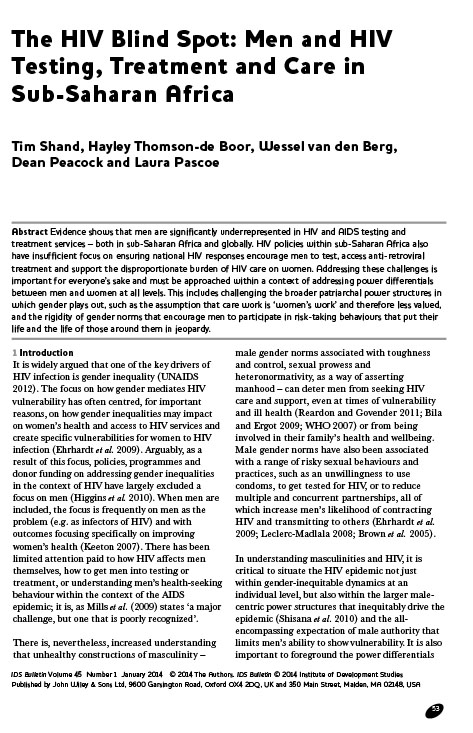
Evidence shows that men are significantly underrepresented in HIV and AIDS testing and treatment services – both in sub-Saharan Africa and globally. HIV policies within sub-Saharan Africa also have insufficient focus on ensuring national HIV responses encourage men to test, access anti-retroviral treatment and support the disproportionate burden of HIV care on women. Addressing these […]
Expanding HIV care in Africa: making men matter
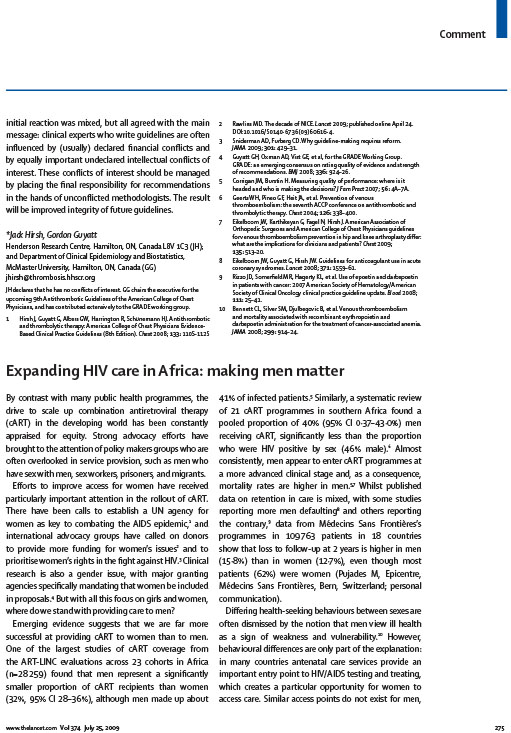
By contrast with many public health programmes, the drive to scale up combination antiretroviral therapy (cART) in the developing world has been constantly appraised for equity. Strong advocacy eff orts have brought to the attention of policy makers groups who are often overlooked in service provision, such as men who have sex with men, sex […]
Men’s heightened risk of AIDS-related death: the legacy of gendered HIV testing and treatment strategies

Women are frequently depicted as the face of AIDS in sub-Saharan Africa (SAA), where they comprise nearly 58% of all reported HIV infections. Donor dollars, policies and HIV programmes have followed suit, resulting in a near-exclusive focus on women. Although African women are represented as particularly vulnerable to HIV infection, it is men, not women, […]


